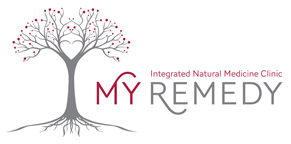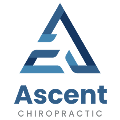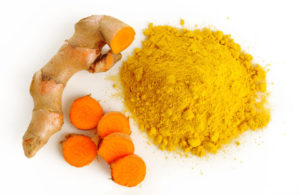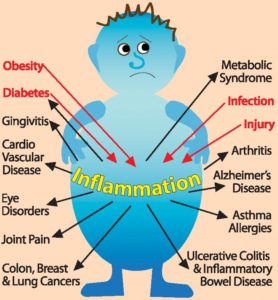SIBO – SMALL INTESTINE BACTERIAL OVERGROWTH
SIBO or Small Intestine Bacterial Overgrowth is a chronic bacterial infection of the small intestine, where the bacteria more closely resembles that of the colon. This causes gut problems because bacteria accumulates in the small intestine, feeds off the food we eat – and hence steals our nutrition – and makes by-products that cause symptoms like bloating, pain and diarrhoea. People with SIBO often complain of fatigue (from anaemia and poor nutritional status) and brain fog symptoms as well.
SIBO is connected to Irritable Bowel and Chronic Fatigue issues.
The problem is that the bacteria interferes with normal digestive processes and food absorption, and can cause damage to the lining or membrane of the Small Intestine leading to Leaky Gut Syndrome.
These bacteria are not friendly – they consume some of our food which leads to deficiencies in nutrients such as iron and B12, causing anaemia and it is a self-perpetuating problem because the bacteria consume food unable to be absorbed due to the lining damage of the small intestine, which then creates more bacterial overgrowth. Gas is produced within the small intestine and this is what causes abdominal bloating, abdominal pain, cramping, constipation, diarrhoea or both (the symptoms of IBS). Excess gas can also cause quite severe belching and flatulence.
How do you know if you have SIBO?
One sign of SIBO could be waking with a flat belly but by the end of the day you look 6 months pregnant! It is a most distressing condition!
Research has also shown that proper fat absorption can be affected in SIBO causing deficiencies of vitamins A & D, and we also see fatty stools. Through the damaged intestinal lining (the leaky gut) larger food particles not able to be fully digested, re-enter into the body. This causes the immune system to react and can lead to food allergies/ sensitivities. The bacteria themselves, and not just their by-products, can enter the body through the bloodstream.
The immune system reacts to bacteria and their cell walls (endotoxins) which can lead to chronic fatigue and body pain, and the liver has to work harder to cope with all of this. These bacteria also excrete acids in high amounts which can cause neurological and cognitive symptoms, hence the ‘brain fog’.
How do you ‘fix it’?
There is a lot you can do naturopathically to improve the condition. Hydrogen breath tests and stool tests are often used to test for bacterial overgrowth. Most Gastroenterologists would use Antibiotics to treat this condition, but as this is a naturopathic discussion, here is what I think.
Naturopathic treatment
The core treatment, naturopathically, would be to support gut repair and therefore repair the gut lining; elimination of toxins; support food enzyme activity (ie digestion); and enhance the microbial environment in a series of steps using herbal formulas, supplements, and dietary changes.
Like pharmaceutical antibiotics, natural antibiotics seek to attack the bacterial overgrowth head on and fairly quickly. I would use herbal antibiotics. The goal is to kill the bacterial. It must be followed with preventative measures, including large doses of specific probiotics – healthy good bacteria.
A study at John’s Hopkins Hospital found “herbal therapies are at least as effective as Rifaximin”, with “similar response rates and safety profiles”. I have consistently found them to be as effective as pharmaceutical antibiotics in relieving and reducing symptoms. I prefer to work through a plan of steps to deal with SIBO but some options on that plan will include: removing food and chemical irritants, and possibly a food sensitivity test.
Next step is stimulating a healthy digestion with specific therapeutic herbs and bitters, improving HCl production with Betaine and Gentian; and adding digestive enzymes; improving intestinal motility, reducing bacterial overgrowth with specific antibacterial herbs and essential oils, thus restoring the beneficial bacteria and repairing gut integrity.
Gut and liver detoxification and support are usually required and dietary changes will be necessary. I would also recommend having a Hemaview (Live Blood Analysis Screening) done, because it is great for spotting leaky gut issues, inflammation, and poor nutritional status.
REFERENCES
Beers, M. (2006). Merck Manual (18th Ed). New Jersey: Merck Research Laboratories.
Bone, K. (2007). The Ultimate Herbal Compendium. Queensland: Phytotherapy Press.
Daniluk, J. (2011). Meals That Heal Inflammation. California: Hay House.
Hawrelak, J. A. (2013). Choosing the right strains for Specific Therapeutic Applications. Illuminate Natural Medicine.
Hechtman, L. (2012). Clinical Naturopathic Medicine. Chatswood: Elsevier.
Osiecki, H. (2012). The Nutrient Bible (8th ed.). Queensland: Bio-Concepts Publishing.
Pauling, L. (2014, December 04). Linus Pauling Institute – macronutrient center. Retrieved December 04, 2014, from Linus Pauling Institute – Oregon State University: http://lpi.oregonstate.edu/infocenter/vitamins.html
Saxelby, C. (2006). Nutrition for Life. Victoria: Hardy Grant.
The Anti-Inflammatory Pyramid. (2012, November 01). Retrieved November 01, 2012, from Biopractica: www.biopractica.com.au






